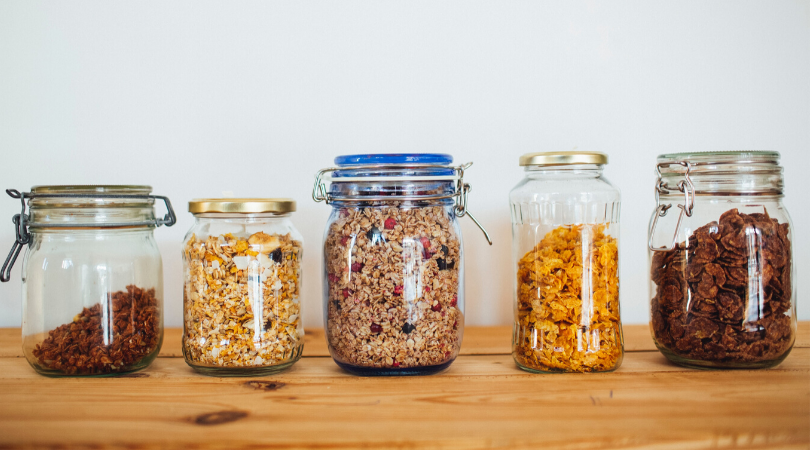
Making the Switch to Reusable Kitchen Roll

*Affiliate Links
Reducing household waste is a passion of mine and we have dedicated the last few years to tackling areas of our home and lifestyle in order to remove single-use items and replace them with reusable alternatives. Once you start looking into it, the choices just seem to keep coming and honestly, it becomes a fun task that you can almost become obsessed with. One area where significant progress can be made is in the kitchen, where single-use products are commonly found. From plastic washing-up bottles to clingfilm, plastic freezer bags and surface wipes, not to mention the huge selection of cleaning products but the one I want to cover today is kitchen roll. Now, I am sure you are thinking “Kitchen roll?! Surely that’s not an environmental issue” but yes, yes it is. However, there is a solution – making the switch to reusable kitchen roll. Let’s find out all about it…
The Problem with Disposable Kitchen Roll
Traditional disposable (or single-use) kitchen roll, while convenient, poses several environmental challenges. Firstly, the majority are made from virgin wood pulp, which contributes to deforestation and habitat destruction. Secondly, the manufacturing process involves bleaching and chemical treatments because it isn’t naturally white and that’s the look people want and thirdly, once used, disposable kitchen roll ends up in landfills, where it contributes to the growing problem of waste accumulation. And once you run out, the cycle starts again.

The Case for Reusable Kitchen Roll
Reusable kitchen roll offers a sustainable alternative to its disposable counterpart. Typically it is made from highly absorbent and durable materials such as organic cotton, bamboo, or hemp meaning it can be washed and reused multiple times, over years, significantly reducing waste and resource consumption.
Here are some key benefits of making the switch to reusable kitchen roll:
- Environmental Impact: By reducing reliance on single-use paper products, reusable kitchen roll helps conserve natural resources, minimise deforestation and also decrease the carbon footprint associated with production and disposal.
- Cost-Effectiveness: While the initial investment in reusable kitchen roll may be higher than purchasing disposable alternatives, the long-term cost savings are considerable. Over time, reusable kitchen roll can save money by eliminating the need for frequent purchases of single-use rolls.
- Durability and Performance: Reusable kitchen roll is designed to be highly durable and absorbent, making it much more effective for cleaning spills, wiping surfaces, and tackling everyday messes. Unlike disposable paper towels, which can tear or disintegrate when wet, reusable kitchen roll maintains its integrity through multiple uses.
- Versatility: Reusable kitchen roll is versatile and can be used for a variety of tasks beyond cleaning and wiping. From lining food storage containers to wrapping sandwiches or snacks.

Tips for Transitioning to Reusable Kitchen Roll
Making the switch to reusable kitchen roll is a simple yet impactful step towards a more sustainable lifestyle. Here are some tips to help you integrate reusable kitchen roll into your daily routine:
- Choose Quality Materials: Look for reusable kitchen roll made from organic cotton, bamboo, or hemp for optimal durability and absorbency. High-quality materials will withstand frequent washing and maintain their performance over time. You can even purchase reusable kitchen roll with poppers allowing you to place them on your holder in a roll.
- Establish a Washing Routine: Incorporate reusable kitchen roll into your laundry routine by washing them along with your regular towels and linens. Opt for eco-friendly detergents and eco-settings on your machine to minimise environmental impact.
- Stock Up on an Adequate Supply: Consider purchasing enough reusable kitchen roll to meet your household’s needs from day one. Having an ample supply on hand ensures that you always have some to hand when you need it.
By choosing reusable alternatives over disposable products, you can save a lot of waste as well as money and when it’s a simple swap like a paper kitchen towel to a cloth one, it’s most definitely doable.

*This post contains affiliate links which will not affect your shopping experience but I will earn a little commission when you shop via them. For more information please refer to my disclosure page.
Pin for later:

If you enjoyed this post you can follow more of our life, opinions and antics over on Facebook, Twitter, YouTube and Instagram. Plus feel free to come and join in with my parenting group ‘From One Parent to Another’ on Facebook.
If you’d like to contact me you can either leave me a comment or drop me a line via my contact me page.
For other topics similar to this one check out these suggestions below…



